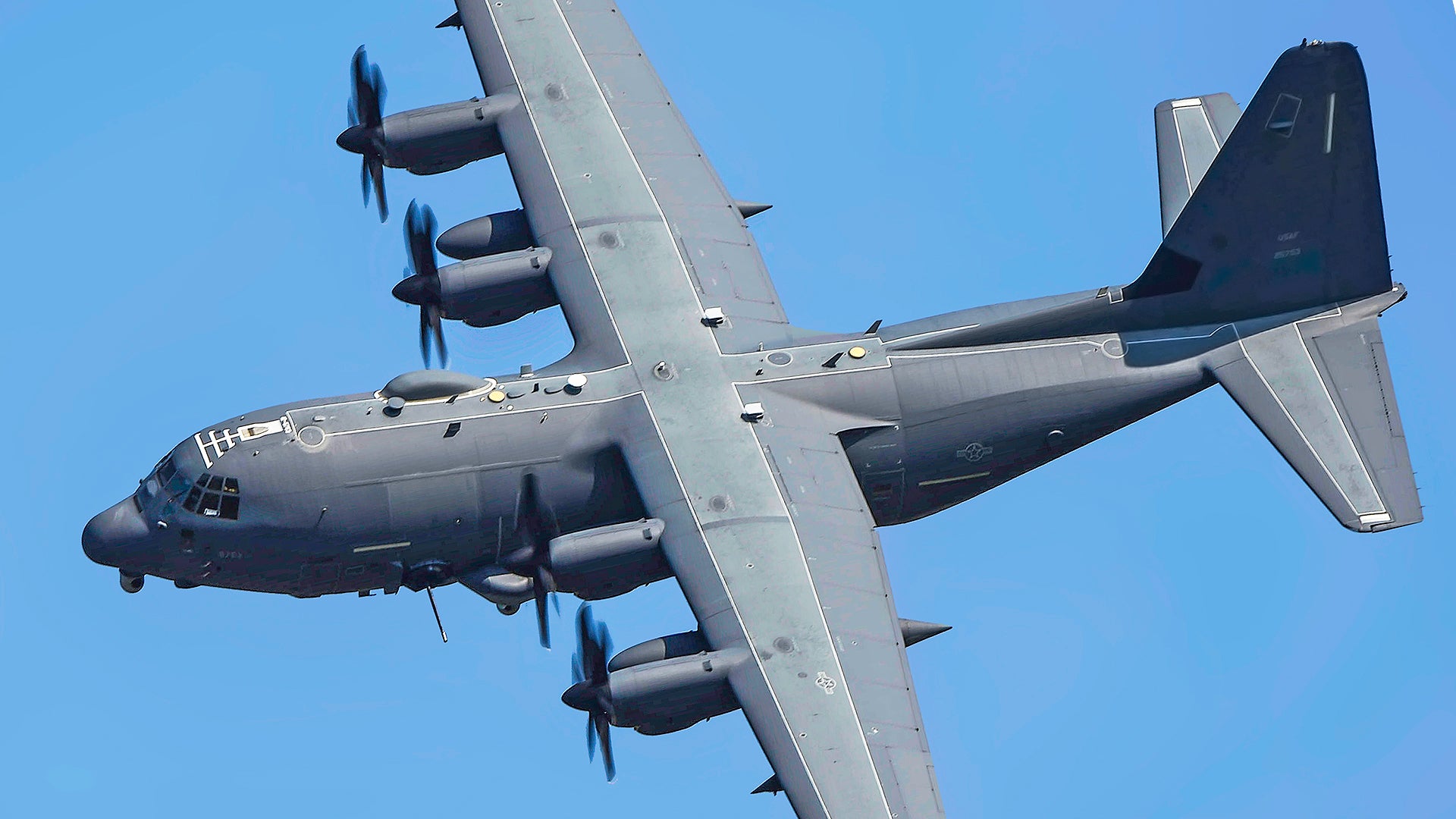An AC-130 gunship, the most feared asset in the Pentagon’s special operations aircraft inventory, flew a highly peculiar path around south Seattle on Tuesday afternoon. The highly modified C-130J transport plane, which bristles with 30mm and 105mm cannons, advanced sensors and defensive countermeasures, and can carry a variety of missiles and guided bombs, wasn’t ‘squawking’ its callsign and wouldn’t even have been noticed if it weren’t for keen-eyed aircraft trackers who monitor plane movements via their ADS-B transponders, which provide basic geographical location, altitude, speed, and flight registry.
The AC-130J Ghostrider gunship—the newest AC-130 variant that was just declared operational late last year by Air Force Special Operations Command—flew all the way from its home at Hurlburt Field located on the Florida Pan Handle to Seattle with a possible stop for fuel in Grand Junction, Colorado under the callsign SHADOW99.

Once on station, the gunship began flying a series of tight racetrack patterns with the majority of them passing over Seattle International Airport and extending out as far as Renton to the east and Vashon Island to the west, with one track going as far north as the upper reaches of Lake Washington.

We don’t know for sure what the AC-130 was doing flying these patters at roughly 8,500 feet over such a dense area—both in terms of population and air traffic—but the event is eerily reminiscent of another series of flights that occurred last summer.
The War Zone broke that story as well, but the aircraft in question then was a shadowy CN-235 special operations transport plane that was highly modified for surveillance and intelligence gathering. It flew very well defined surveillance patterns over a number of weeks in the same area as where the AC-130 was flying on Tuesday. The specially outfitted CN-235 is used to find and fix terrorist targets overseas using its suite of electro-optical and signals intelligence gathering sensors, and to directly support special operators on the ground.

The AC-130J is also outfitted with an elaborate surveillance suite, but it’s primarily used is to provide overwatch and targeting for the aircraft’s diverse weapons inventory, including its two cannons. Primarily the Ghostrider leverages a pair of powerful MX-20D electro-optical/infrared turrets located under its nose and on an expanded landing gear sponson on its port side for these duties.
Having two turrets allows for the AC-130 crew to quickly build-up their situational awareness over a target area, and to maintain surveillance while simultaneously engaging targets on the ground with pinpoint accuracy. It’s possible that these new aircraft could also be equipped with some communications intelligence gathering and emissions geolocating capabilities as well to help it hunt for targets on the battlefield.

What’s most interesting about the Ghostrider’s jagged flightpath over Seattle is that in most cases the aircraft flew directly within the perimeter of Seattle International Airport. It’s possible that the AC-130J was practicing locating targets at the airport and along its extended flight paths.
As we mentioned in our earlier piece on the CN-235’s mysterious flight patterns, the area presents a unique mix of diversified terrain, complex roadways and urban sprawl, as well as port facilities and large bodies of water that are frequently trafficked by vessels. This would be a very “target rich” but also challenging environment for AC-130 crews to train above.
The Pentagon, and especially Special Operations Command, have made it abundantly clear that future wars are likely to be fought in so called “mega cities.” The AC-130 in particular would be extremely useful in such a fight as it can deliver high-volumes of fire with better precision than nearly any other platform in the inventory, and it can stay on station and provide overwatch for a long time without the need to refuel. It’s worth noting that Special Operations Command is known to conduct training operations in urban areas, sometimes with little or no notice, which has drawn significant ire from local populations.

The track does not make it clear exactly where the aircraft landed, but it is likely sortieing out of McChord AFB located near Tacoma to the south of where it was flying its patterns. Apparently the aircraft landed, took on fuel, and then launched again and was up flying similar patterns last evening, although we don’t have a recorded track on that flight.
We have done a cursory examination of the radio traffic emanating from Seattle International Airport at the time the AC-130 was overhead and strangely enough, we couldn’t pick up any direct communications or traffic calls. It’s possible both air traffic control and the AC-130 was communicating on UHF, which wouldn’t be recorded by LiveATC.com.
We have reached out to Air Force Special Operations Command for explanation but they were unwilling to “comment on the movement of our assets” at this time.
We will be sure to keep you in the know if the mysterious Ghostrider gunship pops up again over Seattle.
Update: 1:30am PST—
Here is another track from the AC-130J’s latest mission, flown on March 21st, 2017. The aircraft executed the mission under the callsign EXIDS11. The jagged lines are likely the result of imperfect telemetry garnered from Multilateration (MLAT) tracking according to two separate sources. The MC-130J’s route continues to be focused on Seatac and is very similar to the one flown the day earlier. The length of these legs is also consistent with an AC-130’s overhead surveillance profile according to multiple sources that have contacted The War Zone.


Other sources have also mentioned that a larger special operations exercise may begin in the coming week, with multiple aircraft flying out of McChord AFB. We will keep an eye out to see if the MC-130J in question is joined by some of its special operations stablemates in the skies over Seattle.
A special hat tip to our longtime friend Paul Schweizerhof for the lead.
Contact the author: Tyler@thedrive.com
